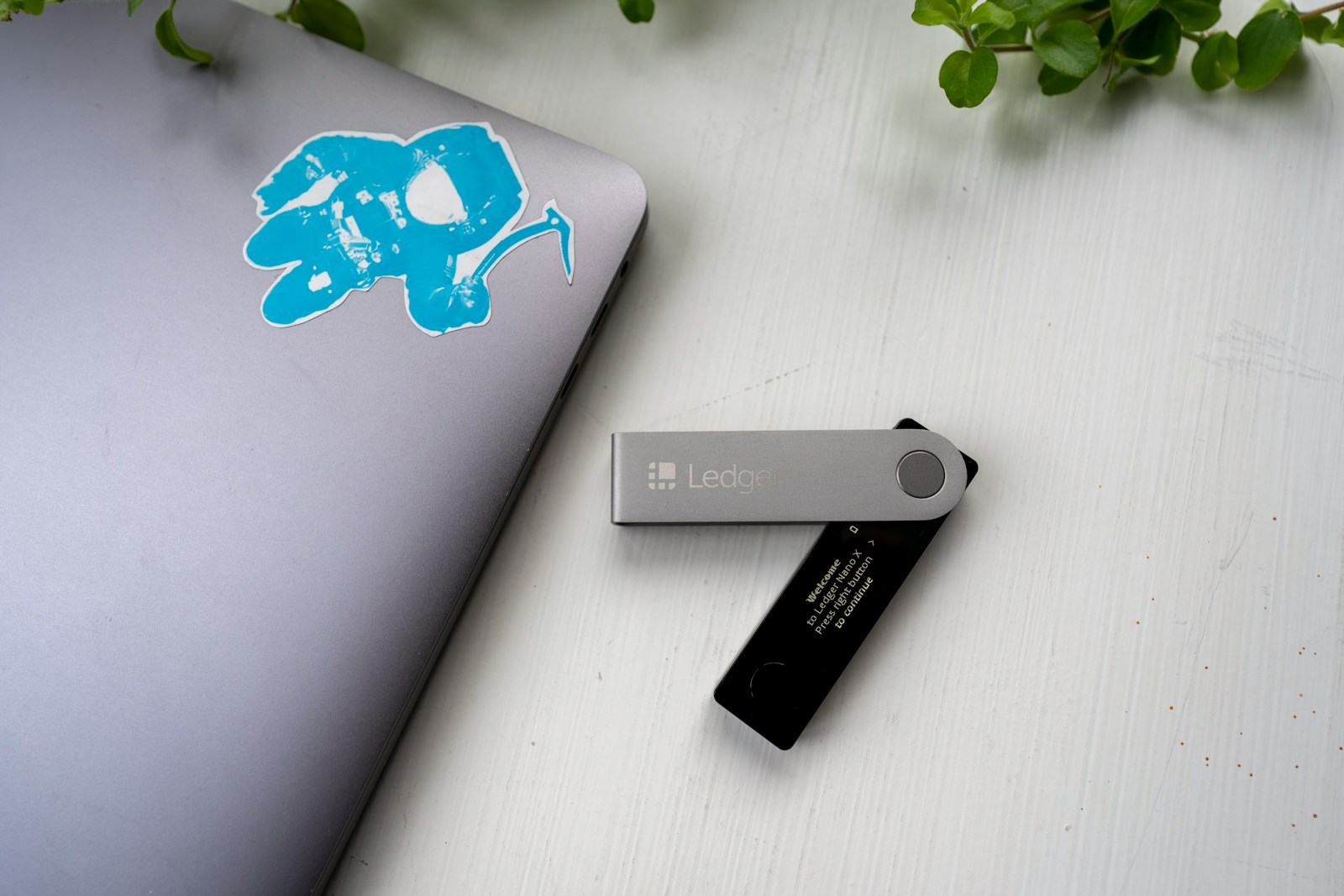
Accurate pricing relies on multifaceted approaches that integrate transaction history, creator reputation, and rarity metrics. Recent sales data reveal that pieces with verified provenance and limited editions command premiums up to 40% above average listings. Volume fluctuations often correlate with platform-specific trends, where high liquidity can depress prices despite strong artistic merit. For instance, a surge in trading activity on leading platforms during Q1 2024 coincided with a 15% decrease in median sale price, highlighting the inverse relationship between turnover and valuation.
Comparative sales analysis remains a cornerstone for estimating worth but requires contextual adjustments. Simply matching past sale prices ignores evolving collector preferences and shifts in utility features embedded within tokens. The incorporation of algorithmic scoring–factoring in engagement metrics such as social media mentions and secondary market demand–offers enhanced predictive power. A notable case is the rise of generative collections whose floor prices doubled after integration with interactive experiences, proving that static evaluation models fall short in dynamic environments.
Volume-weighted pricing models provide deeper insight into real market sentiment than isolated transactions do. By aggregating sales over defined intervals and weighting them by trade size, analysts can smooth out anomalies caused by outlier bids or wash trading. This technique unveiled undervalued assets during late 2023 when smaller trades disproportionately influenced average pricing indices. Additionally, incorporating blockchain analytics to track wallet activity aids in distinguishing organic accumulation from speculative pumping, refining price discovery mechanisms further.
What role do external factors like macroeconomic shifts and regulatory developments play? Fluctuations in broader crypto asset valuations often cascade into this sector’s performance; for example, tightening monetary policies correlated with a 25% contraction in active buyers last winter. Moreover, jurisdictional clarity around intellectual property rights has started to affect creator-driven projects’ appeal. Evaluators must therefore blend quantitative data with qualitative insights to capture these evolving dynamics accurately.
Ultimately, combining transactional datasets with behavioral indicators yields the most robust appraisal framework available today. Leveraging machine learning algorithms trained on multi-dimensional inputs–including rarity scores, historical volume patterns, creator influence indices, and external market signals–enables more precise price forecasting. As trading ecosystems mature and transparency improves, such integrated methods will become indispensable tools for collectors and investors aiming to navigate complex valuation challenges efficiently.
NFT Market Analysis: Digital Art Valuation Methods
Price determination for unique tokenized creations relies heavily on liquidity indicators and transaction history. Monitoring the floor price–the lowest asking value within a collection–provides immediate insight into asset accessibility and demand trends. For instance, collections like CryptoPunks or Bored Ape Yacht Club maintain floor prices exceeding tens of thousands of dollars, signaling sustained investor confidence despite market volatility.
Volume metrics complement pricing by reflecting actual turnover rates over specific intervals. High trade volumes often suggest robust interest, while sharp declines may indicate market saturation or speculative corrections. Analyzing weekly volume shifts alongside price fluctuations enables refined forecasting models that separate transient hype from genuine valuation growth.
Primary Techniques for Assessing Tokenized Artwork Worth
One prevalent approach involves comparative sales analysis, where recent transactions of similar assets establish benchmarks. This method accounts for rarity traits such as edition size, creator reputation, and provenance verified via blockchain records. For example, limited editions signed by renowned creators typically command premiums upwards of 30% compared to generic items.
Another technique employs algorithmic scoring systems integrating metadata attributes–color palettes, animation complexity, or interactivity features–with market performance indicators. Platforms like Nansen utilize on-chain analytics to generate composite scores that assist collectors in evaluating potential appreciation versus current asking prices.
The impact of social sentiment indices also cannot be overlooked. Tracking mentions across forums and social media channels correlates strongly with short-term price momentum. Case studies demonstrate that spikes in community engagement precede notable volume increases by up to 48 hours, offering tactical windows for acquisition or liquidation decisions.
A holistic evaluation combines these dimensions rather than relying on isolated data points. For example, a low floor price paired with increasing volume and positive social sentiment might signal an undervalued asset poised for appreciation. Conversely, inflated prices unsupported by trading activity often precede corrections.
The rapid evolution of blockchain technology introduces new parameters affecting worth assessment frameworks. Layer-2 solutions reducing gas fees encourage more frequent trades, thus enhancing liquidity profiles previously constrained by high transaction costs. Additionally, integration of fractional ownership mechanisms diversifies investor bases but complicates direct comparison with traditional single-owner tokens.
Ultimately, accurate appraisal demands continuous monitoring using sophisticated dashboards aggregating real-time metrics across multiple marketplaces. Analysts must balance quantitative inputs with qualitative insights–such as project roadmap viability and ecosystem partnerships–to formulate precise forecasts amidst shifting economic conditions globally impacting this sector.
Comparing NFT Pricing Models
Effective pricing frameworks rely heavily on transactional volume and floor price dynamics within collections. One prevalent approach utilizes historical sales data to determine asset worth, emphasizing the average selling price weighted by recent activity. This method adjusts for liquidity fluctuations by discounting older sales and prioritizing high-frequency transactions, which better reflect current demand and supply balance. For example, analyzing a top-tier collection with a 7-day trading volume exceeding $50 million reveals that prices closely track the rolling average sale value rather than isolated outliers.
Another widely adopted technique involves scarcity-driven algorithms that integrate rarity scores derived from unique attributes or traits. Such models assign premiums to assets exhibiting uncommon features, thus influencing perceived value beyond mere transaction history. An illustrative case is a project where items with rare visual elements commanded prices up to 3x higher than the median floor despite similar trade volumes, indicating strong investor preference for distinctive characteristics embedded within metadata.
Comparative Insights on Valuation Approaches
Statistical regression models incorporating multiple variables–such as creator reputation, community engagement metrics, and time-weighted sales–offer a multi-dimensional perspective on asset pricing. These frameworks use machine learning techniques trained on thousands of recorded trades to predict fair value with increased accuracy. Notably, projects employing such predictive analytics reported reduced price volatility by approximately 15%, suggesting improved market efficiency through comprehensive data integration.
Conversely, the auction-based model relies on open bidding mechanisms to establish real-time valuation ceilings and floors. This dynamic system often results in rapid price discovery but can be susceptible to manipulation or speculative spikes during low-liquidity periods. A documented instance involved an experimental drop generating a peak bid nearly five times higher than the previous floor, only to stabilize after secondary market corrections–a reminder of inherent volatility linked to auction dynamics.
Furthermore, composite indices aggregating multiple collections provide macro-level insights into overall sector trends, using weighted averages of floor values combined with aggregate transaction volumes. These indices serve institutional investors seeking benchmarked exposure without focusing on individual pieces. As of Q1 2024, such indices indicated a 12% quarterly appreciation across diversified portfolios despite intermittent volume contractions in specific niches.
The juxtaposition of these models highlights essential trade-offs between granularity and responsiveness. While trait-based rarity scoring captures nuanced desirability factors missed by pure market metrics, volume-weighted averages excel at reflecting broad transactional realities. Incorporating hybrid strategies that merge statistical forecasting with real-time auction signals appears promising for aligning asset prices closer to intrinsic worth amid fluctuating participation levels globally.
Role of Scarcity in Valuation
Scarcity directly influences the price dynamics within tokenized collectible ecosystems, where a limited supply often drives demand and propels valuation. For instance, collections with fixed issuance caps tend to exhibit higher floor values due to constrained availability. An analysis of recent trading volumes reveals that assets with strict edition limits maintain consistently elevated price floors compared to those with open or flexible minting schedules. This correlation underscores how rarity acts as a quantitative parameter in pricing models, reinforcing its role as a fundamental metric for assessing asset worth.
Examining specific case studies, such as the 10,000-item profile picture projects versus limited series releases capped at 100 or fewer units, demonstrates divergent market behavior. The former often experiences wider volume fluctuations and lower average transaction prices, while the latter commands premium valuations supported by scarcity-driven collector interest. Moreover, projects employing tiered scarcity–where ultra-rare subclasses coexist with more common variants–provide compelling data on how differential supply levels influence relative pricing within a single ecosystem.
Technical Insights into Scarcity’s Impact on Price Floors and Trading Volume
From a technical standpoint, scarcity contributes to liquidity constraints that can elevate bid-ask spreads and reduce available supply at given price points. This phenomenon is evident in low-volume segments where thin order books amplify price swings and create volatile floor changes. Conversely, high-volume collections with abundant supply generally display more stable floors but lower per-unit prices. Advanced valuation frameworks integrate scarcity indices alongside trading velocity metrics to model expected future appreciation or depreciation accurately.
Recent empirical data from blockchain analytics platforms show that scarcity-adjusted models outperform simplistic volume-based forecasts when predicting short-term price movements. For example, during periods of heightened speculative activity, scarce editions experience sharper upward repricing compared to their more plentiful counterparts. Such insights suggest that incorporating precise issuance data enhances the robustness of automated pricing algorithms and can inform strategic acquisition decisions by investors seeking undervalued tokens within niche segments.
Impact of Creator Reputation
The influence of an originator’s standing on the pricing and liquidity of unique tokenized assets cannot be overstated. Statistically, collections linked to creators with established track records show a floor price up to 35% higher than those from lesser-known authors within similar genres. This premium reflects buyer confidence in long-term demand, driven by historical performance and community engagement metrics.
Trading volume further illustrates this trend: projects associated with reputable developers often experience sustained activity, sometimes exceeding 10,000 transactions monthly during peak phases. Such consistency signals trustworthiness and perceived quality, which traditional financial analysis would equate to lower risk and higher intrinsic value. Contrastingly, newcomers frequently face volatility spikes and rapid declines in interest post-launch.
Reputation as a Quantitative Indicator in Asset Appraisal
Incorporating creator prestige into asset evaluation models enhances precision beyond fundamental supply-demand dynamics. For example, regression analyses reveal that reputation indices–constructed from social media sentiment scores, previous sales data, and collaboration history–can explain roughly 40-50% of variance in secondary sale prices. These findings suggest that integrating qualitative factors systematically improves forecasting accuracy.
Moreover, reputation serves as a proxy for anticipated utility or exclusivity embedded within the tokenized piece. Projects led by influential figures tend to attract partnerships with established platforms or endorsements from cultural institutions, adding layers of scarcity and desirability. Case studies such as the surge in trading volume following celebrity-backed releases underline how reputation catalyzes market momentum.
However, it is critical to consider potential overvaluation stemming from hype cycles around prominent creators. Instances where inflated initial valuations led to steep corrections highlight the need for robust due diligence incorporating both quantitative metrics and contextual understanding of project fundamentals. Tools combining on-chain analytics with off-chain social indicators help mitigate these risks by offering real-time insights into shifting perception trends.
Ultimately, evaluating digital collectible worth necessitates balancing measurable data like floor price stability and turnover rates against intangible aspects such as creator credibility and historical significance. As ecosystem maturity progresses, advanced appraisal frameworks will increasingly rely on multidimensional reputation assessments alongside traditional economic indicators to determine fair pricing structures effectively.
Analyzing Market Demand Trends
Tracking transaction volume provides one of the most direct insights into current demand patterns for tokenized collectibles. Recent data indicates a sharp contraction in turnover from Q1 2023, with daily sales dropping nearly 40% across leading platforms compared to the previous quarter. This decline suggests that speculative activity has cooled, shifting focus toward more utility-driven acquisitions. Monitoring liquidity metrics alongside price fluctuations enables a clearer understanding of which asset categories sustain investor interest versus those experiencing volatility-induced sell-offs.
Price dynamics within this sector reveal nuanced behavior tied to creator reputation and scarcity factors. For example, limited-edition releases by established creators maintain stable floor prices despite broad market corrections, whereas mass-produced series often face steep markdowns. Applying econometric models such as hedonic pricing helps isolate attributes impacting value beyond mere rarity–such as on-chain provenance and secondary market performance–which traditional appraisal techniques might overlook.
Factors Influencing Demand Shifts
Several elements drive shifts in user engagement and purchasing decisions:
- Platform innovation: Introduction of enhanced interoperability protocols has increased cross-platform transferability, broadening audience reach and stimulating transaction frequency.
- Regulatory environment: Jurisdictional clarity around digital ownership rights impacts institutional participation levels, often reflected in volume spikes post-legal announcements.
- User demographics: Data shows a growing share of younger collectors prioritizing experiential or gamified assets over static collectibles, altering demand composition substantially.
A comparative study between two major ecosystems during Q2 2023 highlighted that projects integrating augmented reality features saw a 25% higher average sale price than standard offerings without immersive components. Such findings underscore how technological advancements directly affect consumer valuation models.
The interplay between these variables illustrates why simplistic valuation approaches can misrepresent true demand conditions. Incorporating multifactor regression analysis aids stakeholders in forecasting price trajectories with greater precision by accounting for both intrinsic qualities and external influences.
A recurring observation concerns the correlation between secondary trading activity and original issuance strategies. Projects employing staggered drop schedules tend to preserve sustained interest over longer periods compared to one-off auctions that generate short-term hype but rapid depreciation afterward. This insight offers practical guidance for creators aiming to optimize long-term asset appreciation through strategic release planning aligned with buyer psychology.
The ongoing evolution of consumer preferences demands continuous refinement in evaluating desirability metrics beyond raw sales data alone. Integrating sentiment analysis from social channels with transactional records creates a multidimensional perspective capable of detecting emerging trends early. Thus, advanced analytical frameworks combining quantitative data sets with qualitative signals prove indispensable for comprehensive demand assessment moving forward.
Influence of Blockchain Data
The transparency and immutability of blockchain records provide a robust foundation for evaluating collectible tokens linked to creative works. Detailed transaction histories enable precise tracking of ownership transfers, sale prices, and timestamps, allowing analysts to establish reliable pricing benchmarks. For instance, examining the time-weighted average price over recent sales offers clearer insights than single-point floor values, minimizing distortions from outlier transactions. This granular data supports refined models that incorporate volume fluctuations and rarity factors.
Monitoring liquidity metrics derived from on-chain activity is crucial for understanding demand dynamics. High turnover rates within a collection often indicate stronger market interest and can justify premium price multiples. Conversely, stagnant volumes may signal oversupply or waning enthusiasm, necessitating caution in valuation assumptions. A practical example is the comparative study between two prominent token collections: one exhibiting consistent daily sales above 500 units with stable minimum bid levels versus another showing sporadic trades and wide floor price volatility.
Leveraging Blockchain Insights for Pricing Accuracy
Blockchain-derived analytics facilitate multiple approaches to pricing estimation beyond raw sale figures. Metrics such as cumulative volume weighted average price (VWAP), seller concentration ratios, and holding periods offer nuanced perspectives on asset desirability and risk profile. For example:
- Cumulative VWAP smooths short-term anomalies by factoring total traded value against volume over defined intervals.
- Seller concentration highlights whether a few holders dominate supply, potentially impacting liquidity resilience.
- Average holding duration indicates speculative behavior or collector commitment, influencing long-term valuation trends.
Combining these indicators yields comprehensive appraisals that adapt to evolving transactional contexts rather than relying solely on snapshot data points.
The relationship between floor thresholds and transaction velocity also reveals much about speculative pressures versus organic adoption levels. Collections with aggressively rising floors but declining trade counts may be subject to artificial inflation attempts or thin order books prone to manipulation. In contrast, steady floors accompanied by expanding buyer participation suggest sustainable appreciation backed by genuine community growth. Such distinctions require continuous blockchain monitoring tools capable of parsing real-time event streams alongside historical datasets.
Lastly, integrating smart contract analytics into evaluation frameworks enhances understanding of token utility and protocol-driven incentives affecting supply-demand equilibrium. Tracking royalty flows or embedded staking rewards via on-chain contracts provides indirect signals about creator engagement and secondary market health. Recent case studies show that projects incorporating programmable economic features tend to maintain higher trading volumes and more stable valuations amid broader ecosystem fluctuations compared to static collections lacking dynamic mechanisms.
Assessing Historical Sales Data: Final Considerations
Relying on past transaction records provides a critical foundation for estimating the worth of unique tokenized creations. Price floors derived from consistent sales volumes offer tangible benchmarks, yet interpreting these figures demands a nuanced approach that accounts for fluctuations in demand and rarity.
For instance, projects exhibiting steady trade activity with low floor prices often indicate undervalued assets, whereas sporadic spikes in volume can signal speculative behavior rather than intrinsic value shifts. Integrating time-series data with liquidity metrics enhances precision in forecasting future price trajectories and identifying potential overextensions.
Strategic Insights and Emerging Trends
- Volume-weighted pricing: Applying weighted averages that emphasize recent high-volume periods yields more reliable estimates compared to simple moving averages, which may lag behind market dynamics.
- Comparative rarity indexing: Cross-referencing trait scarcity alongside historical sale prices refines valuation models by quantifying desirability beyond surface-level metrics.
- Liquidity analysis: Monitoring turnover rates reveals investor confidence levels; slow-moving items often experience depressed valuations despite artistic merit or creator reputation.
The continuous evolution of automated appraisal tools integrating blockchain analytics will further enhance accuracy, enabling stakeholders to adjust strategies dynamically. In practice, platforms like OpenSea have begun incorporating floor price trends directly into their dashboards, reflecting growing demand for transparency and actionable intelligence.
As ecosystems mature, we should anticipate wider adoption of machine learning frameworks that synthesize heterogeneous data–social sentiment, creator influence, and transactional history–to produce holistic price forecasts. Such advancements promise to reduce volatility by aligning expectations more closely with empirical evidence.
Ultimately, grounding assessment techniques in robust historical datasets equips collectors and investors with actionable insights that transcend superficial hype cycles. Will future breakthroughs enable real-time dynamic pricing engines? The trajectory suggests so–driven by enhanced data integration and smarter algorithmic design shaping the asset valuation landscape at large.







